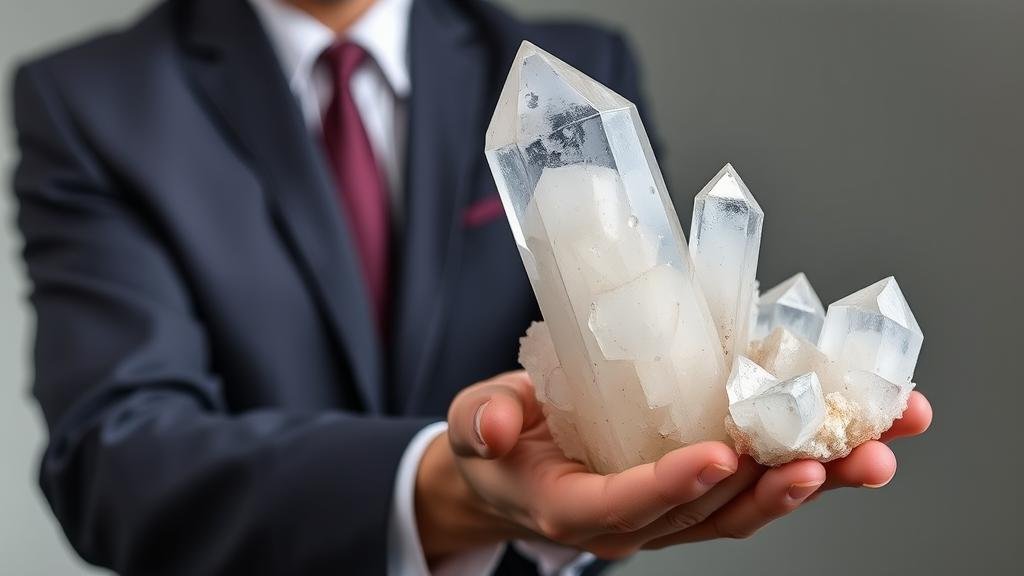Negotiating the Sale of Large Quartz Crystals to Collectors
Negotiating the Sale of Large Quartz Crystals to Collectors
Negotiating the sale of large quartz crystals to collectors can be a rewarding yet complex process. The unique characteristics of quartz crystals–such as clarity, size, and origin–play a crucial role in determining their appeal and value. This article explores strategies and considerations for effectively navigating this market, drawing on industry insights and real-world examples.
Understanding the Quartz Crystal Market
Before entering negotiations, it is essential to understand the quartz crystal market. Quartz is one of the most abundant minerals on Earth, but larger, high-quality specimens are less common. This scarcity can drive prices significantly higher. According to the International Gem Society, high-quality large quartz crystals can sell for anywhere from $50 to several thousand dollars, depending on their features.
Key Factors Influencing Value
Several factors influence the value of large quartz crystals. Understanding these can enhance your negotiating position:
- Size: Larger crystals are often more valuable due to their rarity. A 20-inch quartz crystal, for example, can fetch a price that is exponentially higher than a smaller specimen.
- Clarity: Crystals with fewer inclusions and higher transparency are preferred. The marketplace often regards clear quartz, known as rock crystal, as the most desirable form.
- Origin: The geographical origin can impact desirability. Crystals from regions known for high-quality specimens, such as Brazil or Arkansas, may command higher prices.
- Condition: The physical condition, including chips, fractures, or alterations, affects value greatly. Mint-condition specimens are more sought after.
Researching Potential Buyers
When negotiating sales, understanding your buyers is critical. There are various types of quartz crystal collectors, including:
- New Collectors: Often seek affordable options and may not have extensive knowledge about the market.
- Serious Collectors: Look for unique, high-quality pieces and are willing to invest significant amounts of money.
- Retailers: Dealers in the crystal market who will ultimately resell your specimens.
Researching potential buyers can enhance your negotiation strategy. Engaging with collectors through forums, social media groups, and local crystal shows provides insights into buyer preferences and current market trends.
Preparing for the Negotiation
Preparation is vital in negotiations. Here are important steps to consider:
- Appraisal: Obtain appraisals from professionals to understand the crystals market value. This provides a solid foundation for negotiations.
- Documentation: Provide certificates of authenticity and clear details about the provenance of the crystals. This transparency builds trust and can justify higher asking prices.
- Pricing Strategy: Develop a clear pricing strategy. Set a baseline and have a target price in mind. Be prepared to offer discounts or additional items to close the deal.
Effective Negotiation Techniques
During the negotiation process, employ techniques that promote a constructive dialog:
- Active Listening: Listen to the buyers needs and concerns. This helps in tailoring your pitch to what the buyer values most.
- Building Rapport: Establishing a personal connection can facilitate smoother negotiations. Find common interests, such as shared experiences in crystal collecting.
- Be Flexible: Be prepared to make concessions. For example, if a buyer is hesitant on price, consider bundling smaller crystals with larger ones.
Closing the Deal
As you near the end of negotiations, focus on finalizing the deal:
- Clear Terms: Articulate the final terms of the sale, including price, payment methods, and shipping details. Clarity prevents misunderstandings.
- Follow-up: After closing the deal, follow-up with a thank you note or email. This fosters goodwill and may lead to future business.
Real-World Applications
Consider the case of a gem dealer who successfully sold a large quartz cluster for $5,000. Preparation involved researching comparable sales online, obtaining two independent appraisals, and presenting detailed certificates of origin. By understanding the collectors preferences–specifically the cluster’s unique formation styles–the dealer framed their sales pitch effectively, leading to a successful transaction.
Conclusion
Negotiating the sale of large quartz crystals requires a blend of market knowledge, preparation, and effective communication. By understanding the nuances of the crystal market and applying strategic negotiation techniques, sellers can maximize their sales outcomes. Embrace these principles to enhance your negotiating prowess and successfully engage with the vibrant community of quartz crystal collectors.
Takeaway: The key to successful negotiation lies in preparation, understanding buyer motivations, and maintaining a flexible approach throughout the process.


